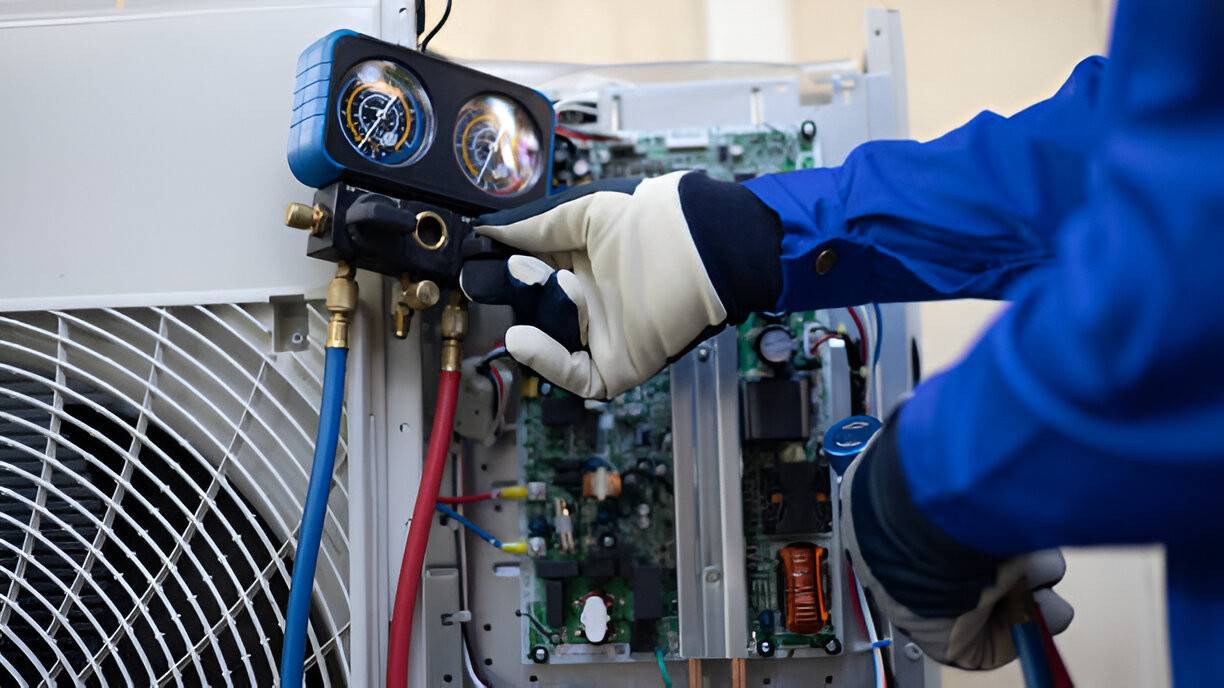AC Tune-Up in Bradenton, FL


Why an AC tune-up matters in Bradenton
- High seasonal demand: Central air systems run heavily from late spring through early fall. Pre-season tune-ups catch problems before peak use.
- Humidity and salt exposure: Coastal air and humidity promote coil corrosion, clogging, and electrical stress. Cleaning and corrosion checks are critical.
- Allergen and debris load: Pollen, grass clippings, and fine sand can clog coils and filters faster in our area, degrading performance and indoor air quality.
Common AC problems in Bradenton homes
- Reduced cooling output or long run times
- Higher than usual energy bills
- Short cycling or frequent on/off cycles
- Frozen evaporator coils or ice buildup
- Leaking refrigerant and lower-than-optimal pressures
- Noisy operation from bearings, fans, or loose panels
- Clogged condensate drains and water overflow
- Corroded exterior components and electrical connections
Detailed AC Tune-Up checklist
A comprehensive tune-up addresses the system end to end. Typical inspection and maintenance tasks include:
- Clean evaporator and condenser coils: Remove dirt, pollen, and salt residue to restore heat transfer and efficiency.
- Check refrigerant level and pressures: Verify correct refrigerant charge and look for signs of leaks that reduce cooling performance.
- Inspect and clean/replace air filters: Improve airflow and protect indoor coil surfaces; recommend filter type and change interval.
- Lubricate motors and moving parts: Reduce friction and wear on blower motors and fan bearings for quieter, longer life.
- Test electrical components and connections: Tighten terminals, inspect capacitors and contactors, and test safety controls to reduce failure risk.
- Calibrate thermostat and test controls: Confirm accurate temperature sensing, proper setpoints, and smooth cycling behavior.
- Verify blower operation and airflow: Measure motor speed and static pressure to ensure proper airflow across coils.
- Clear and inspect condensate drain and pan: Prevent clogs and overflow that can cause indoor water damage and mold.
- Inspect refrigerant lines and insulation: Check for damaged insulation, exposed lines, and potential leak indicators.
- Examine outdoor unit condition: Look for corrosion, bent fins, debris buildup, and proper unit elevation to prevent flood damage.
- Basic ductwork and return check: Identify obvious gaps, disconnected returns, or excessive dust that reduce system efficiency.
What to expect during the visit
- Duration: Most full tune-ups take between 45 minutes and 90 minutes for standard residential systems. Larger or multi-zone systems may require more time.
- Process overview: A certified technician will arrive with tools, safety equipment, and diagnostic gauges. They will perform the checklist items in a logical order: visual inspection, airflow checks, electrical tests, refrigerant verification, and coil/condensate cleaning.
- Testing and verification: Technicians typically run the system through a complete cooling cycle to confirm temperatures, pressures, and stable operation before leaving.
- Documentation: Expect a clear summary of findings and recommended next steps if repairs or parts replacement are needed.
Seasonal timing and recommended frequency
- Pre-summer tune-up: Schedule maintenance in late spring or early summer to prepare for sustained high use. This is the most important seasonal check for Bradenton homes.
- Pre-winter check: While winters are mild, a fall inspection can prepare heat pump systems or verify off-season conditions and reduce spring surprises.
- Frequency: For most homes, an annual professional tune-up is recommended. Older systems, homes with pets, or high-use households may benefit from biannual checks.
Memberships, flat-rate options, and ongoing value
Many homeowners choose maintenance plans that include scheduled tune-ups, priority scheduling, and discounted diagnostic rates for repairs. Flat-rate tune-up packages are also common for transparency and predictable budgeting. These arrangements emphasize preventive care and make it easier to maintain regular service intervals without needing to remember seasonal scheduling.
Performance and reliability benefits
- Improved efficiency: Clean coils and proper refrigerant charge reduce run times and energy consumption.
- Lower risk of breakdowns: Electrical checks and lubrication address the leading causes of emergency failures during peak heat.
- Longer equipment life: Regular maintenance reduces strain on compressors and motors, delaying costly replacements.
- Better indoor comfort and air quality: Proper airflow, clean coils, and functioning drains reduce humidity, odors, and airborne contaminants.
- Reduced repair costs over time: Early detection of worn components prevents small issues from becoming major, expensive repairs.
Quick maintenance tips and warning signs
- Change or check filters every 1 to 3 months during heavy use.
- Keep exterior unit clear of vegetation and debris; trim at least 2 feet of clearance.
- Monitor energy bills and run times; a sudden increase may indicate a problem.
- Watch for water pooling near indoor unit or unusual odors — these can signal a blocked condensate drain or mold.
- Listen for grinding, buzzing, or rattling sounds that indicate mechanical or electrical issues.
Regular AC tune-ups tailored to Bradenton’s climate and coastal conditions deliver measurable comfort, efficiency, and reliability benefits. Annual professional inspections and seasonal pre-summer servicing reduce the chance of inconvenient breakdowns and help you get the most life out of your cooling equipment.
Service Areas


